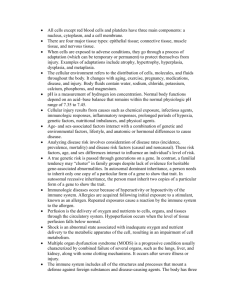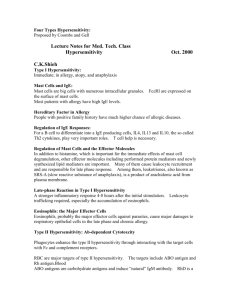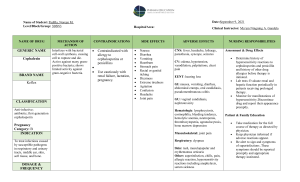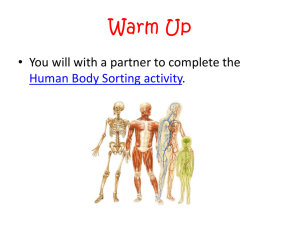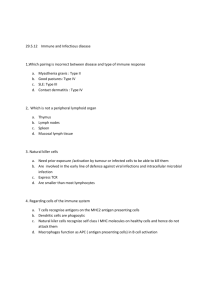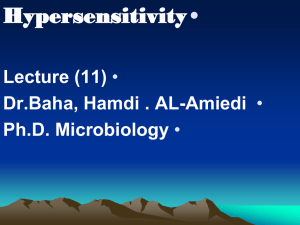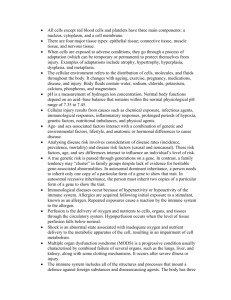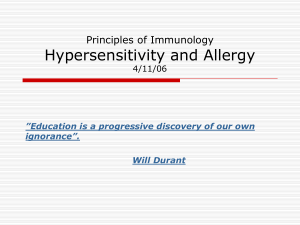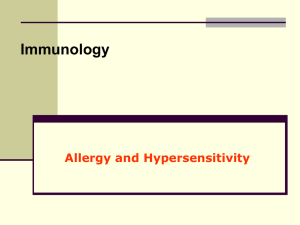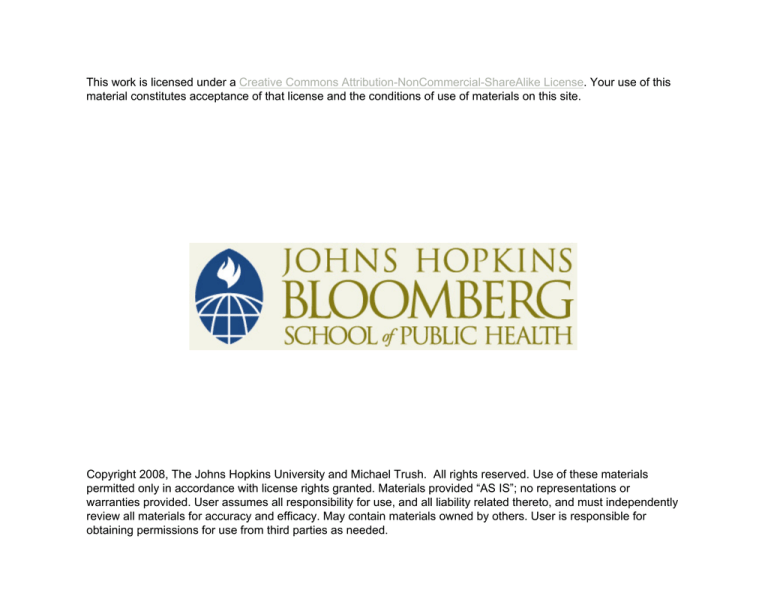
This work is licensed under a Creative Commons Attribution-NonCommercial-ShareAlike License. Your use of this
material constitutes acceptance of that license and the conditions of use of materials on this site.
Copyright 2008, The Johns Hopkins University and Michael Trush. All rights reserved. Use of these materials
permitted only in accordance with license rights granted. Materials provided “AS IS”; no representations or
warranties provided. User assumes all responsibility for use, and all liability related thereto, and must independently
review all materials for accuracy and efficacy. May contain materials owned by others. User is responsible for
obtaining permissions for use from third parties as needed.
Section C
Immunologically Mediated Tissue Injury
Immunologically Mediated
Tissue Injury
While immune responses constitute a
protective mechanism to foreign
organisms, they can lead to tissue damage
An immune response that results in tissue
injury is broadly referred to as a
hypersensitivity reaction
Such responses are classified into four
categories based on the immune
mechanisms involved
27
Classification of Immunologic
Diseases
Type I: immediate hypersensitivity
– IgE antibody; mast cells
Type II: antibody-mediated
– IgM, IgG antibodies against tissue or
cell surface antigens
28
Classification of Immunologic
Diseases
Type III: immune complexes of IgG or
IgM antibodies
Type IV: delayed-type hypersensitivity
– Sensitized CD4 lymphocytes,
macrophages
29
30
Hapten
A hapten is a substance that is too small
to induce an immune response (i.e., lowmolecular-weight chemicals)
Haptens can induce an immune response
when they bind to a larger carrier molecule
(i.e., protein) to form a hapten-carrier
conjugate (adduct)
31
Schematic Diagram of Chemical Interaction Leading
to Hypersensitivity Reactions or Autoimmunity
32
Allergic( Hypersensitivity)
Reactions Take Place
in Two Stages
First encounter
with antigen
Second or
subsequent
encounter with
antigen
Sensitization
phase
Elicitation
phase
33
Immunologic Mechanism of
Contact Sensitization (Skin)
34
35
Contact Dermatitis
Public Domain
Contact dermatitis around a healing rug burn.
36
Question
The skin and lungs are often target organs
of toxicity by immune-mediated
mechanisms — Why?
37


